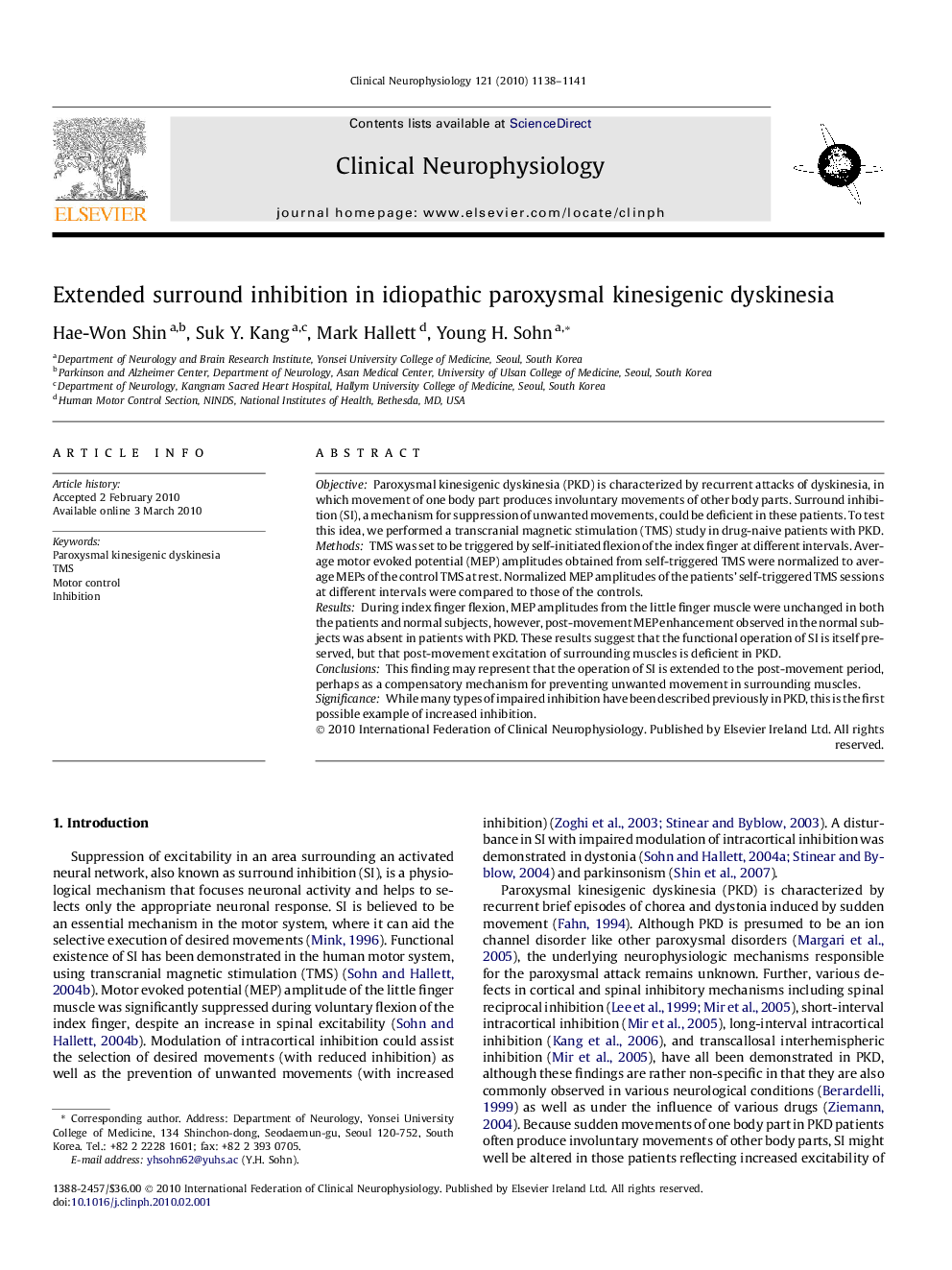| Article ID | Journal | Published Year | Pages | File Type |
|---|---|---|---|---|
| 3045939 | Clinical Neurophysiology | 2010 | 4 Pages |
ObjectiveParoxysmal kinesigenic dyskinesia (PKD) is characterized by recurrent attacks of dyskinesia, in which movement of one body part produces involuntary movements of other body parts. Surround inhibition (SI), a mechanism for suppression of unwanted movements, could be deficient in these patients. To test this idea, we performed a transcranial magnetic stimulation (TMS) study in drug-naive patients with PKD.MethodsTMS was set to be triggered by self-initiated flexion of the index finger at different intervals. Average motor evoked potential (MEP) amplitudes obtained from self-triggered TMS were normalized to average MEPs of the control TMS at rest. Normalized MEP amplitudes of the patients’ self-triggered TMS sessions at different intervals were compared to those of the controls.ResultsDuring index finger flexion, MEP amplitudes from the little finger muscle were unchanged in both the patients and normal subjects, however, post-movement MEP enhancement observed in the normal subjects was absent in patients with PKD. These results suggest that the functional operation of SI is itself preserved, but that post-movement excitation of surrounding muscles is deficient in PKD.ConclusionsThis finding may represent that the operation of SI is extended to the post-movement period, perhaps as a compensatory mechanism for preventing unwanted movement in surrounding muscles.SignificanceWhile many types of impaired inhibition have been described previously in PKD, this is the first possible example of increased inhibition.
